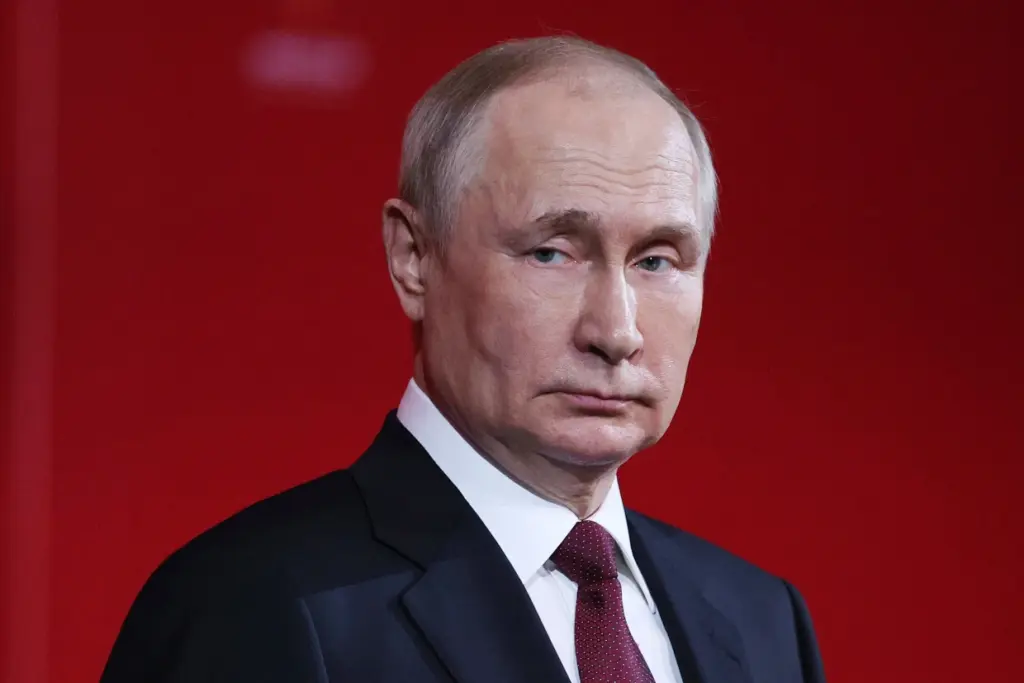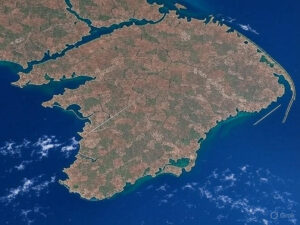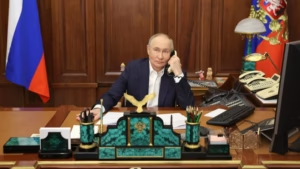Putin’s Ticking Clock: A Year to Break or Be Broken
The war in Ukraine grinds on, a brutal chess game where Vladimir Putin seems to believe he can outlast his opponents. But if you listen closely to voices from Russia’s past, like former Prime Minister Mikhail Kasyanov, you get the sense that Putin’s grip on power is starting to slip. Kasyanov, who served in the Kremlin during Putin’s early years, recently suggested that by the end of 2025, the Russian president might be forced to the negotiating table—not out of goodwill, but out of sheer necessity. The thesis here is stark: Putin’s regime, propped up by a war-driven economy and a dwindling pool of resources, has roughly a year before it buckles under its own weight. If Ukraine holds firm and the West tightens the screws, Putin’s dream of a revived Russian empire could collapse faster than anyone expects.
A War Economy on Borrowed Time
Let’s start with the Russian economy, which, frankly, is a house of cards masquerading as a fortress. Kasyanov points out that Russia’s war machine is humming, with factories retooled to churn out munitions. This isn’t just a wartime necessity—it’s become the backbone of Russia’s economic survival. The Kremlin has leaned so heavily into this war economy that civilian industries are shriveling. Official figures from early 2025 show civilian sectors contracting, a slow bleed that’s starting to hurt. It’s like a bodybuilder who’s only trained one arm: the war machine looks impressive, but the rest of the system is atrophying.
Sanctions, long dismissed by Putin as mere nuisances, are finally biting. The cumulative effect of three years of Western restrictions has created a slow-motion crisis. Oil prices, the lifeblood of Russia’s budget, are languishing around $50-$60 per barrel, far below the $70 Putin’s planners banked on. Kasyanov notes that a stricter enforcement of the oil price cap could choke off the Kremlin’s revenue stream even further. Picture a car running on fumes—Putin’s regime can keep moving for now, but the tank is dangerously low. His ministers, according to Kasyanov, are already sounding alarms, warning that the financial strain will only worsen by year’s end.
What’s troubling is how Putin’s response to this pressure isn’t retreat but escalation. He’s pushing for a decisive offensive in Ukraine, betting he can crush Kyiv before his economy crumbles. It’s a gambler’s logic: double down before the house calls your bluff. But this strategy hinges on a shrinking window of opportunity. If Ukraine can hold the line—and with new Western arms supplies, it might—Putin’s plan could backfire spectacularly.
The West’s Role: Trump and the Sanctions Gambit
Enter Donald Trump, whose shadow looms large over this geopolitical drama. Kasyanov believes Trump’s recent hints at a “major statement” on Russia signal a shift. The former U.S. president, never one to shy away from bold gestures, may back a new sanctions bill winding through Congress. This isn’t about altruism; it’s about deal-making. Trump has reportedly agreed with European allies to sell, not donate, military equipment to Ukraine—a move that could bolster Kyiv’s defenses while appealing to his “America First” base. It’s a pragmatic play, but you can’t help but wonder if Trump’s heart is truly in it. Standing up to Putin requires more than rhetoric, and Kasyanov seems cautiously optimistic that Trump might deliver.
The proposed sanctions, particularly Senator Lindsey Graham’s initiative to slap tariffs on countries buying Russian oil, could be a game-changer. If passed, this law would give the U.S. president a powerful tool to squeeze Putin’s finances further. It’s not a silver bullet—sanctions rarely are—but it’s a signal to Moscow that the West isn’t bluffing. The mere threat of these measures, Kasyanov argues, could force Putin to rethink his strategy. It’s like holding a loaded gun to the Kremlin’s economic temple: even if you don’t pull the trigger, the message is clear.
Ukraine as Europe’s Firewall
Kasyanov’s most sobering point is that Ukraine isn’t just fighting for itself—it’s the linchpin of European security. If Putin overruns Ukraine, he won’t stop there. Moldova, a small, vulnerable neighbor, would be next, followed by a test of NATO’s resolve. Putin’s ambition to rebuild a Russian empire isn’t a secret; he’s practically shouting it from the Kremlin’s rooftops. Kasyanov warns that a victorious Putin would probe NATO’s Article 5, the alliance’s mutual defense clause, to see if it holds. The chilling part? Not all NATO members seem convinced it would. Some countries might hesitate to send troops to defend, say, Poland or Estonia, creating a crack in the alliance that Putin could exploit.
This isn’t just speculation—it’s rooted in history. Putin’s annexation of Crimea in 2014 and his meddling in eastern Ukraine showed his willingness to push boundaries. Each time, the West’s response was firm but not decisive, emboldening him further. If Ukraine falls, it’s not hard to imagine Putin staging provocations—cyberattacks, border skirmishes, or hybrid warfare—to test NATO’s unity. The stakes couldn’t be higher: Ukraine’s resistance is buying time for Europe to shore up its defenses.
The Human Cost and Putin’s Blind Spot
What’s often lost in these strategic discussions is the human toll. Ukraine’s cities are rubble, its people displaced or dead, yet Putin presses on, convinced he can outlast the West’s resolve. Kasyanov’s analysis suggests Putin’s confidence is a facade. The manpower shortage is acute—Russia is scraping the bottom of the barrel, pulling workers from civilian jobs to feed the war machine. It’s unsustainable, like burning your furniture to keep warm. By year’s end, Kasyanov predicts, the cracks will be undeniable.
Putin’s obsession with victory blinds him to the bigger picture. His economy is faltering, his allies are dwindling, and his military is stretched thin. Yet he clings to the belief that one final push can break Ukraine. It’s a delusion born of hubris, reminiscent of past autocrats who overreached—think Napoleon at Waterloo or Hitler in Stalingrad. History doesn’t repeat itself exactly, but it rhymes, and Putin’s gamble feels eerily familiar.
A Year to Change History
The next 12 months will be pivotal. If Ukraine can withstand Russia’s onslaught, and if the West maintains its pressure through sanctions and military aid, Putin’s regime could face a reckoning. Kasyanov’s prediction—that Putin might sue for peace by year’s end—isn’t a guarantee but a possibility grounded in economic reality. The Kremlin’s war chest is depleting, its economy Occupation is faltering, and its people are growing weary. Time is not on Putin’s side.
But there’s a flip side. If the West wavers, if aid to Ukraine slows, or if sanctions lose their bite, Putin could still eke out a pyrrhic victory. The cost would be catastrophic—not just for Ukraine but for the global order. A Russian empire reborn would destabilize Europe, embolden autocrats worldwide, and undermine the very idea of collective security.
So, what’s the path forward? The West must double down on supporting Ukraine, not just with words but with weapons, money, and resolve. It must enforce sanctions with ruthless precision, cutting off Putin’s financial lifelines. And it must prepare for the long haul, because even if Putin’s regime cracks in a year, the road to peace will be grueling.
As Kasyanov’s words echo, you can’t shake the feeling that we’re at a turning point. Putin’s clock is ticking, but so is ours. If we fail to act decisively, the cost of inaction will haunt us for generations. The question isn’t just whether Putin will break—it’s whether the West has the courage to make sure he does.



